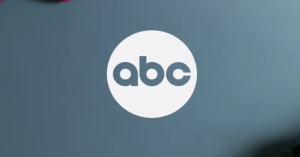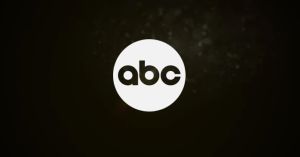Released in theaters 35 years ago, John Carpenter‘s The Thing, a remake of The Thing From Another World, gave audiences a ground-breaking sci-fi horror film that set the standard in paranoia and terror.
In the film, a team of researchers at an Antarctic outpost accidentally uncover an extraterrestrial threat that had been hibernating under the ice for hundreds if not thousands of years. As opposed to other films featuring alien threats, what makes The Thing stand out is that the main threat rarely reveals itself, as its powers allow it to replicate and kill humans. The isolated team doesn’t know who really is who they say they are, as the team begins to turn on one another to determine who is nothing more than a “thing.”
Videos by PopCulture.com
Carpenter earned a name for himself with films like Halloween, The Fog, and Escape From New York, which were all genre thrillers that he made outside the studio system. The Thing marked his first foray into working with a big studio, making the movie for Universal Pictures.
To celebrate the film’s anniversary, check out some behind the anecdotes you might not have known that helped make The Thing the classic that it is today!
Freezing For Real
With a frozen landscape being integral to the plot and the idea of a spaceship crashing on earth thousands of years ago, the filmmakers didn’t want to cheat their way out of a frigid environment, going to great lengths to ensure a chilly atmosphere on set.
Much of the film was shot in the British Columbia town of Stewart, a North American city known for its tremendous amount of annual snow accumulation. During that time, the temperatures ranged from -15 degrees Fahrenheit to 0 degrees Fahrenheit, reportedly costing almost $100,000 in gear to keep the crew warm.
Some of the film was shot on sets built in Los Angeles, but to keep the actors in the right frame of mind, the temperature on set was lowered to around 40 degrees.
The film’s devotion to accurately portraying Antarctica has created a tradition in which British Antarctic research stations watch the film every year during an annual celebration.

Appreciated With Time
In 2017, you’d be hard-pressed to find any argument about this film being one of the best thrillers of all time, but when the film was released, it received a less than favorable response.
Carpenter has long stated that this is his personal favorite film that he directed, but upon release, the film was panned by both audiences and critics, with much of the criticism being thrown at the gruesome special effects and overall bleak tone.
What makes the poor initial reaction to the film all the more interesting is knowing that it was released on the same day as Ridley Scott’s Blade Runner, which also drew much criticism and was considered a flop at the time, but has gone on to be another defining film of the sci-fi genre.
Far More Than ‘Special’ Effects
Special effects legend Stan Winston was originally tapped to do this film, but left to help make the werewolf film The Howling. Taking his place was 22-year-old Rob Bottin, whose work on the film would become legendary.
With the effects in the film being considered some of the best practical special effects of all time, the work Bottin put in wasn’t easy. Bottin’s involvement became so intense that he had to be admitted to the hospital, where he was diagnosed with exhaustion.
Winston did stop by to help out with one effect, in which a dog is taken over by “The Thing,” but as he didn’t want to take any attention away from Bottin’s accomplishments, he declined a screen credit for his work.
For one scene in particular, Bottin opted to use real animal organs and intestines to create a convincing cadaver, with star Wilford Brimley being the only actor on set who wasn’t disgusted, having previously been a hunter.
Same vs. Different
With The Thing and The Thing From Another World both being based on the same story, the two versions had some things in common but also had some differences.
The first film was set in an frozen environment, but opted to set the story in the Arctic as opposed to the Antarctic. Carpenter’s film stuck a little closer to the source material, with no female characters appearing in the remote outpost. The 1951 film, however, not only added female characters but also made sure one served as a love interest to the film’s hero.
Another way Carpenter’s film was more similar to the novel was through its “blood test” scene, where Kurt Russell’s character dipped a hot wire in a dish of blood, which would reveal who had been infected. This scene appeared in the novella and not in the original film.
The original film’s director, Christian Nyby, was not a fan of Carpenter’s film. He reportedly said, “If you want blood, go to the slaughterhouse. All in all, it’s a terrific commercial for J&B Scotch.”
Artistic Inspiration
Almost as iconic as the film itself, the film’s poster has become one of the most iconic images in horror history. One element that makes the poster so memorable is that it doesn’t depict any of the characters from the film, rather just a hooded entity with light emitting from its face.
As opposed to this being an aesthetic choice by artist Drew Struzan, the reason for the ambiguity is that the artist wasn’t given any photos for reference, but was merely given a loose description of what the film was about. As compared to his work on films like Raiders of the Lost Ark and Star Wars, which depict paintings of the main characters, this poster was much different.
Horror magazine Fangoria leaned into that ambiguity with a contest they ran prior to the film’s release in which they asked fans to submit drawings of what they thought the alien threat would look like, rewarding fans with merch from the film and a trip to Universal Studios for whoever drew the image most similar to the alien’s appearance. You can see some of the submissions at Monster Brains.

Questionable Ending
Throughout the entire film, the audience is left to guess who of the characters have been infected and who remains a human, a question that lasts all the way until the end. The film ends with Russell’s character and David Keith’s character sitting by their flaming base, questioning if either of them are infected, but embracing their deaths knowing that the alien won’t escape.
During a recent commentary track for the film, the director of photography, Dean Cundey, revealed that he used a specific light on set to reflect in an actor’s eye if they were still a human. This light is absent from Keith’s character’s eyes in the finale. Additionally, the scene clearly shows Russell’s breath, but you can’t see Keith’s.
With the ending being so ambiguous, Carpenter did shoot a scene in which Russell’s character was rescued and remained a human, but the scene was never used in any cut of the film. However, in a video game based on the film, the character underwent the same fate, with Carpenter considering this narrative to be canon.
MORE NEWS:
- 5 Things You Might Not Know About ‘They Live’
- Scream Factory Releasing Limited Edition Steelbook Blu-rays For 3 John Carpenter Classics
- New Halloween Movie Will Ignore Most Franchise Sequels
Photo Credit: Universal Pictures








